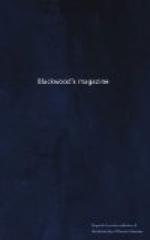grilse and salmon, under ordinary natural circumstances,
do certainly return to their native beds, is one of
great practical importance, because it permits the
plan of peopling barren rivers by the deposition of
impregnated spawn carried from more fruitful waters.
It ought to be borne in mind, however, in relation
to this latter point, that these waters must possess,
in a considerable measure, the same natural attributes
which characterize the voluntary haunts of salmon.
If they do not do so, although the fry bred there
will in all probability return thither from the sea
as grilse, yet the breeding process will be carried
on at first feebly, and then inefficiently, till the
species finally becomes extinct. The same observations,
of course, apply to trout. It has been proposed,
we believe by Sir W.F. Mackenzie of Gairloch,
to apply the principle of one set of Mr Shaw’s
experiments to the improvement of moorland lochs,
or others, in which the breed of trout may be inferior,
by carrying the ova of a better and richer flavoured
variety from another locality. Now, in this well-intentioned
scheme, we think there is some confusion of cause
and effect. It is the natural difference in food,
and other physical features and attributes, between
the two kinds of lochs in question, which causes or
is intimately connected with the difference in the
fleshly condition of their finny inhabitants; and
unless we can also change the characters of the surrounding
country, and the bed of the watery basin, we shall
seek in vain to people “the margins of our moorish
floods” with delicate trout, lustrous without
any red of hue within, in room of those inky-coated,
muddy-tasted tribes, “indigenae an advectae,”
which now dwell within our upland pools.
It has been asserted by some that salmon will dwell
continuously, and even breed, in fresh water, although
debarred all access to the sea. “Near Kattrineberg,”
says Mr Lloyd, in his work on the field-sports of
the north of Europe, “there is a valuable fishery
for salmon, ten or twelve thousand of these fish being
taken annually. These salmon are bred in a lake,
and, in consequence of cataracts, cannot have access
to the sea. They are small in size, and inferior
in flavour. The year 1820 furnished 21,817.”
We confess we cannot credit this account of fresh
water (sea-debarred) salmon, but suppose there must
be some mistake regarding the species. Every
thing that we know of the habits and history, the
growth and migrations, of these fish in Britain, is
opposed to its probability. Mr Young has conclusively
ascertained that, at least in Scotland, not only does
their growth, after the assumption of the silvery
state, take place solely in the sea, but that they
actually decrease in weight from the period of their
entering the rivers; and Mr Scrope himself, (see pp.
27, 30,) although he quotes the passage without protest,
seems of the same opinion. Besides, with their
irrepressible instinctive inclination to descend the




